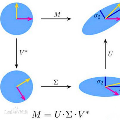In this work, we have analyzed the problem of relative pose initialization between two satellites: a chaser and a non-cooperating target. The analysis has been targeted to two close-range methods based on a monocular camera system: the Sharma-Ventura-D'Amico (SVD) method and the silhouette matching method. Both methods are based on a priori knowledge of the target geometry, but neither fiducial markers nor a priori range measurements or state information are needed. The tests were carried out using a 2U CubeSat mock-up as target attached to a motorized rotary stage to simulate its relative motion with respect to the chaser camera. A motion capture system was used as a reference instrument that provides the fiducial relative motion between the two mock-ups and allows to evaluate the performances of the initialization algorithms analyzed.
翻译:在这项工作中,我们分析了两个卫星(追逐者和非协作目标)之间的相对初始化问题。分析针对基于单镜摄像系统的两种近距离方法:Sharma-Ventura-D'Amico(SVD)方法和硅色相匹配方法。两种方法都是基于对目标几何学的先验知识,但既不需要教育标记,也不需要先行范围测量或国家信息。测试使用2U CubeSat模拟模型作为机动机动旋转级的模拟其相对运动与追击器相机的目标。移动抓捕系统被用作一种参考工具,提供两个模型之间的摩擦相对运动,并能够评价所分析的初始化算法的性能。



